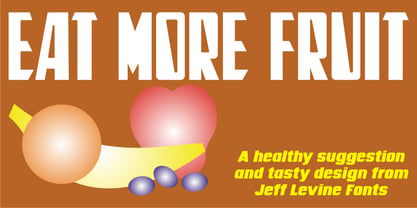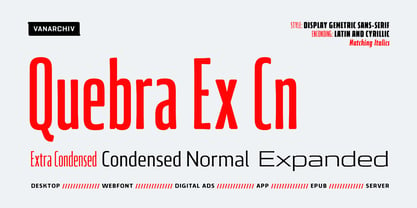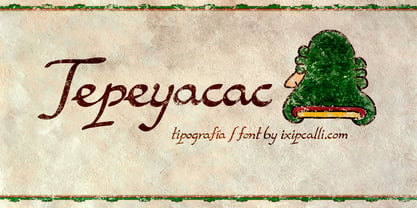10,000 search results
(0.058 seconds)
- Eat More Fruit JNL by Jeff Levine,
$29.00 - Eckhardt Poster Text JNL by Jeff Levine,
$29.00 - PF DIN Text Arabic by Parachute,
$145.00 - Ex Kata Damaged - Unknown license
- Noir et Blanc by Pelavin Fonts,
$25.00 - Paul Maul XT by !Exclamachine,
$9.99 - PR Ex Cathedra by PR Fonts,
$10.00 - Joules et Jacques by Nicky Laatz,
$18.00 - Quebra Ex Condensed by Vanarchiv,
$55.00 - Do not eat this Italic - Unknown license
- You are what you eat - Unknown license
- Do not eat this Skew - Unknown license
- Do not eat this Fat - Unknown license
- Yoshi's Story (game text) (BRK) - Unknown license
- Exit font (for a film) - Unknown license
- Yoshi's Story game text BRK - Unknown license
- Linotype Syntax Lapidar Serif Text by Linotype,
$29.99 - Times New Roman Small Text by Monotype,
$67.99 - Trade Gothic Next Soft Rounded by Linotype,
$53.99 - Alien Encounters - Unknown license
- Do not eat this Fat Italic - Unknown license
- Eat your face with a fork - Unknown license
- Eat your face with a spoon - Unknown license
- Nasalization - Unknown license
- TSF et Compagnie Tryout - Unknown license
- Genghis Khan - Personal use only
- Copasetic - 100% free
- Speedwriter - Personal use only
- Tepeyacac by Ixipcalli,
$35.00 - Vazari Sans Serif - Unknown license
- Ignis et Glacies Extra Sharp - Personal use only
- ArabDances - Unknown license
- Jerash Demo - Unknown license
- Duc de Berry by Linotype,
$29.99 - Neuzeit S LT by Linotype,
$30.99 - Decaying - Unknown license
- Sliced Juice - Unknown license
- Digital tech - Personal use only
- Archeologicaps - Unknown license
- Sistina by URW Type Foundry,
$35.00




































